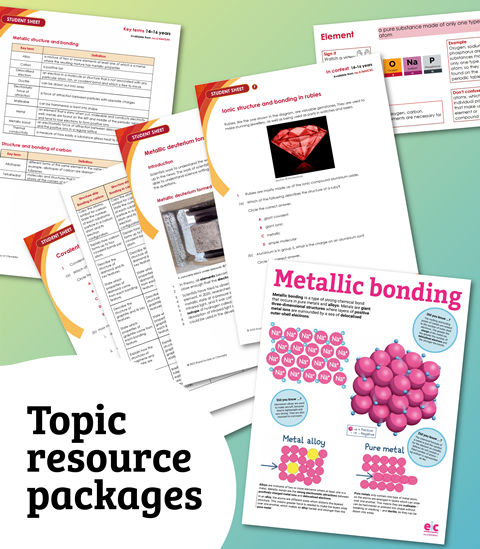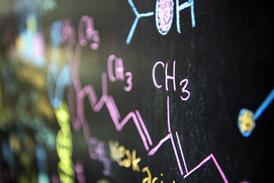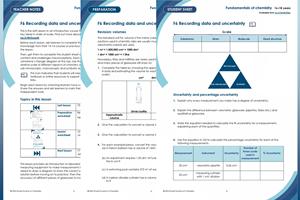Build a solid foundation by starting with the fundamentals
This is the sixth module of a short, introductory course covering key ideas for post-16 chemistry learners in order of scale. Find more information about the course here or download the ready-to-use worksheets.
This lesson provides an introduction to laboratory work as learners use a range of measuring equipment to make measurements to the appropriate precision. They are asked to draw a diagram to show the correct way to fill volumetric glassware with a solution before moving on to practise. Then they predict and compare the accuracy of different pieces of glassware to measure 25 cm3 of water.
How to use this resource
Before each lesson, ask learners to complete the preparation worksheet to revise knowledge from their 14–16 courses or previous lessons and introduce the topic for the lesson.
Then, get them to complete the student sheet during the lesson. It includes all key content and challenges misconceptions. Each student sheet has a scale and a Johnstone’s triangle diagram at the top. Use these to help learners think about the relative scale of different aspects of chemistry and connect their understanding of sub-microscopic, macroscopic and symbolic representations.
The book icon on the student sheets indicates that students will need access to learning materials e.g. textbook or online resources to support their learning.
Begin each lesson by checking learners have completed the preparation work. Share the answers and ask learners to mark their own worksheets as part of their independent work.
Topics in this lesson
Preparation worksheet – revision: volumes; new content: making measurements.
Student sheet – making measurements practise; uncertainty and percentage uncertainty; repeated measurements
Next lesson: F7 Electronic structure: sub-shells and orbitals (coming soon)
Downloads
F6 Recording data and uncertainty preparation worksheet
Handout | PDF, Size 0.3 mbF6 Recording data and uncertainty student sheet
Handout | PDF, Size 0.24 mbF6 Recording data and uncertainty teacher notes
Handout | PDF, Size 0.37 mbF6 Recording data and uncertainty preparation worksheet
Editable handout | Word, Size 4.79 mbF6 Recording data and uncertainty student sheet
Editable handout | Word, Size 0.61 mbF6 Recording data and uncertainty teacher notes
Editable handout | Word, Size 0.93 mb
Fundamentals of chemistry | 16–18 years
- 1
- 2
- 3
- 4
- 5
- 6
- 7
 Currently reading
Currently readingF6 Recording data and uncertainty






















No comments yet